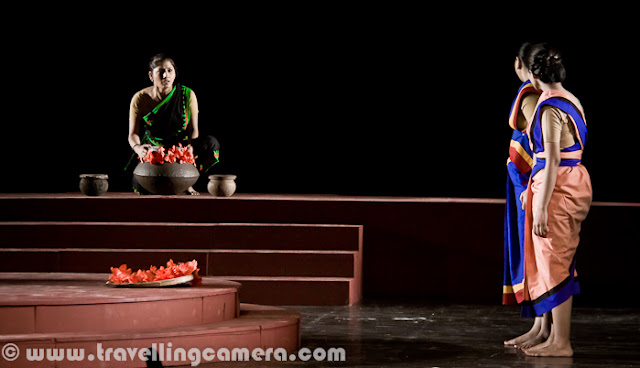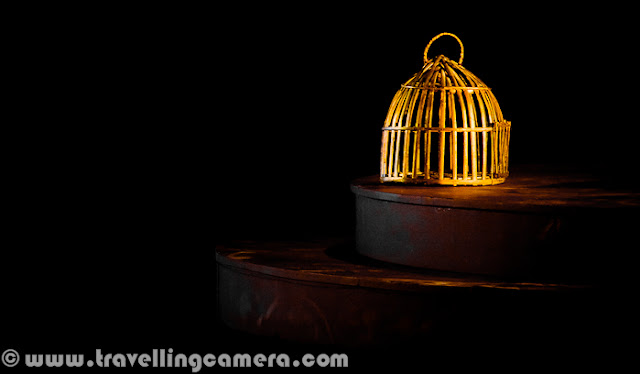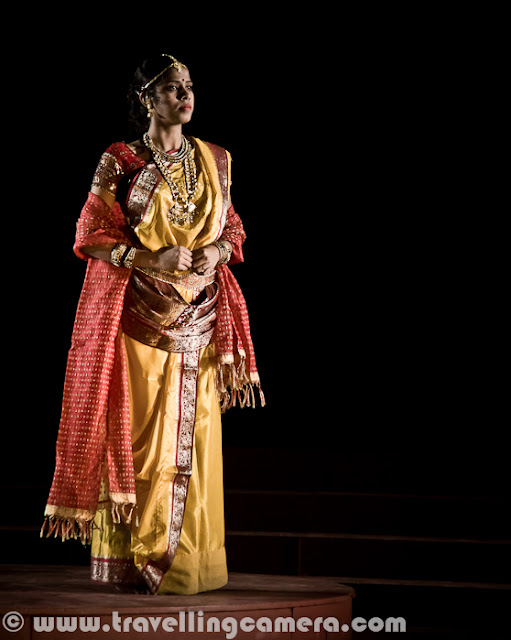Here are some more pictures from the play Chandalika.
To give you some context of the play, it was written by the legendary Rabindranath Tagore and it is the tale of Prakriti, an untouchable girl forced to live on the periphery of society as ‘chandalika’. No one want to play with her, people keep distance from her but at times interact with her for their personal benefits. The play is based on a story from a Buddhist text.
Play starts with some dialogs by Usha Ganguli where she describes the situation of her region without water and how people are crying for water. Usha is playing main role in this play. She has a daughter and both of them are treated badly by higher society. At the same time, she helps the local kingdom by helping in various problems like water scarcity.
Setting and expressions are two powerful tools used to assist dialogs and action in drama for conveying important information to the viewers. Through these tools a lot can be shown without actually being said.
For example, firewood, earthen pots etc. show a rural setting and may also indicate that the play is set in past. Everything cannot be expressed in words because then the play will be much too lengthy, boring and unintelligent.
Interactions between characters, their expressions and their actions often hide a subtext that is very interesting to unearth.
For example, in this scene, can you make out what the character is feeling of thinking without actually knowing what is going on? One can easily assume that the character is not unhappy and may even be pleased about things. I can also see a hint of dreaminess in the eyes and may be lost in thoughts about her beloved. But then that is my interpretation and how close it is to the actual emotions being portrayed by the character depends upon the character's acting skills and my ability to read expressions.
The expressions here are more of defiance and questioning. But then again that is my interpretation and I can be wrong. Another thing you'd want to note is the attire and the make-up. All efforts are made to keep them true to the situation, the period, and the story.
For example, here the dhotis and the lathis indicate that the setting is rural and the expressions of various characters indicate their emotions. For example, the person who is chained is reluctant to go where he is being led and the person in the red dhoti seems to be pleased with himself and takes pleasure in the predicament the chained person is in.
Flowers, dances, audience, claps indicate celebrations of either a festival or an event. Some people are wearing garlands and this may indicate their special place in the society.
Graceful dance moves and melodious singing are all often a part of dramas and I am amazed by the number of talents most of the stage artists hide within themselves. Almost all of them sing well and dance well along with obviously acting well.
One-on-one interactions are some of the most interesting interactions in a play. They reveal more about a character and her relationships with other characters than any other interaction in a play. These are usually more difficult to carry out because the audience is focussed upon the characters involved. These are more challenging for the actors than for the directors.
Multiple characters interactions are more challenging for the playwriter and for the director because it requires exceptional skills to craft such scenes.
Colors and body languages tell stories of themselves. The next time you go to watch a play, try to keep an eye on these things and you will be amazed at what you will discover.
Presence of objects such as cages can be symbolism that you had never suspected. If you observe these things, you will add layers to your play-watching experience.
For example, here it is clear that the woman in the centre is someone who has power over the other two. The cage represents imprisonment or curtailment of freedom.
The attire of this woman indicates affluence and her demeaner indicates power and even royalty. Is there anything else you can make out? Feel free to leave a comment if you can.
The body language of the characters here indicates a mother-daughter relationship. And the leaves and the leaves indicate some sort of a ritual or religious practice. The clothes of these two characters are much simpler. The characters are not affluent but aren't poor either.
Let me know if you can read more into these pictures. I would love to know. Please feel free to leave a comment.


















.jpg)
Comments